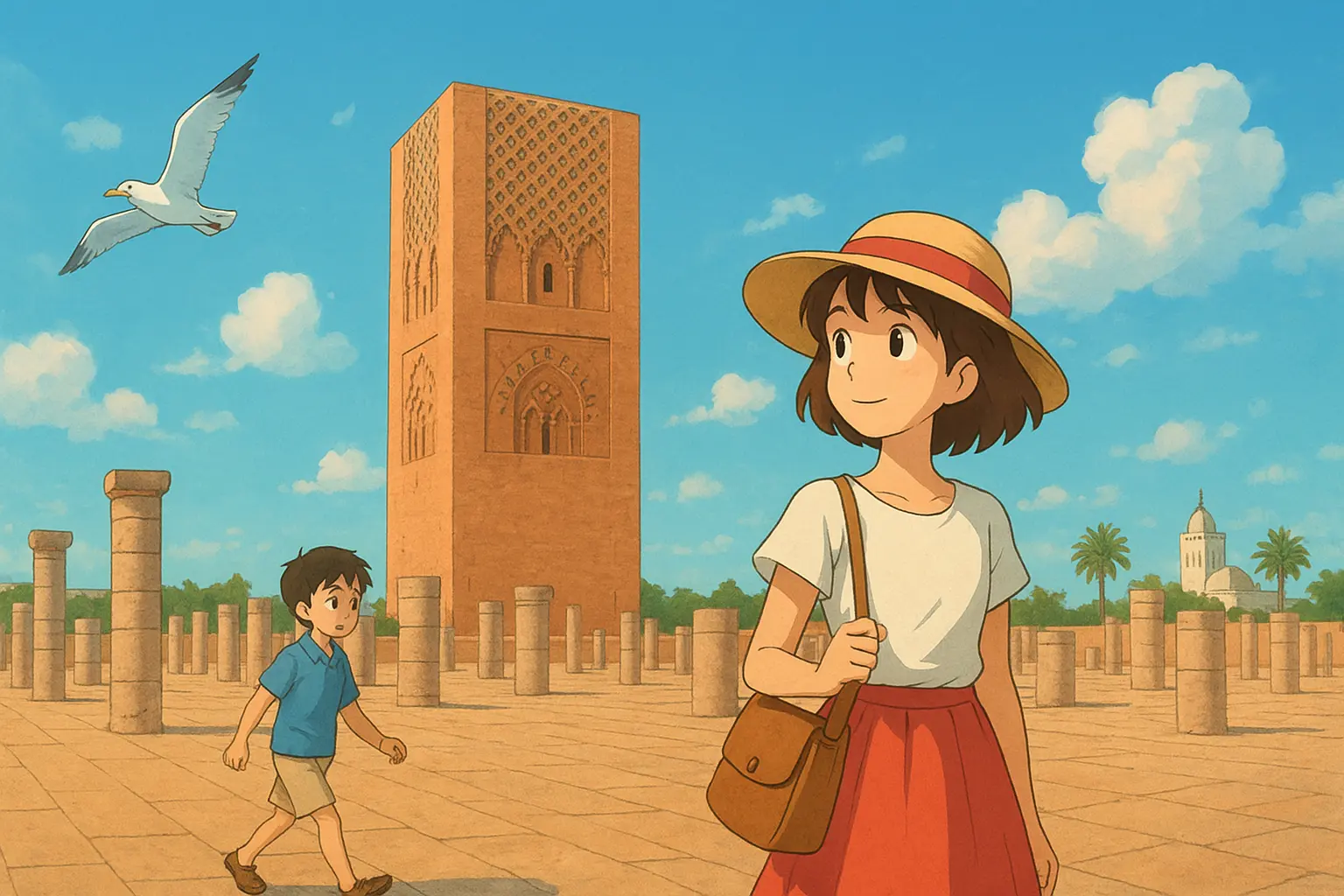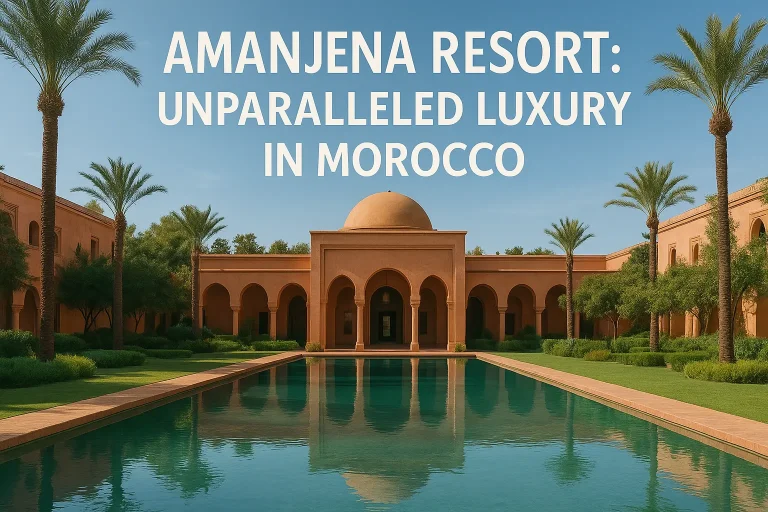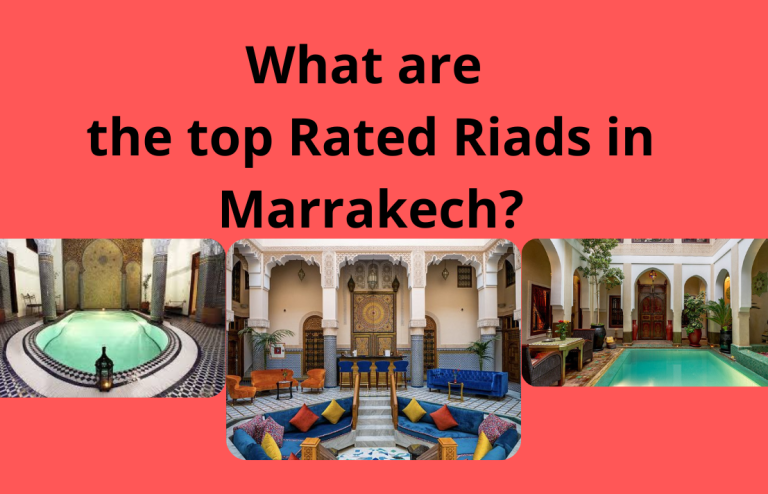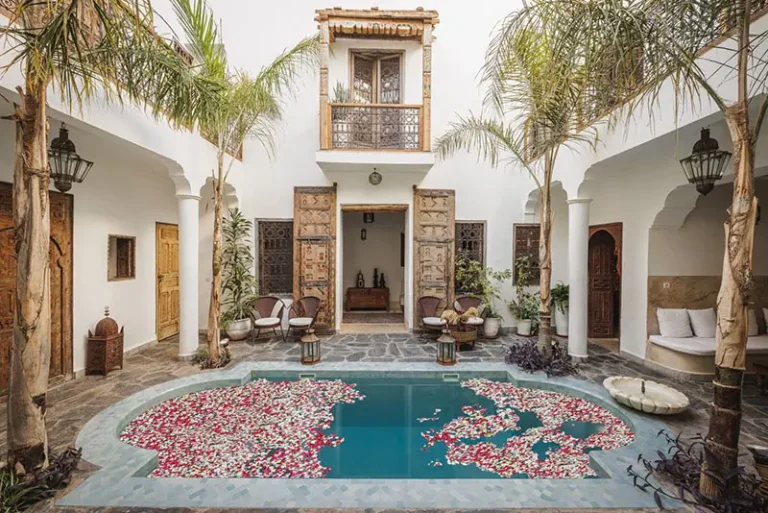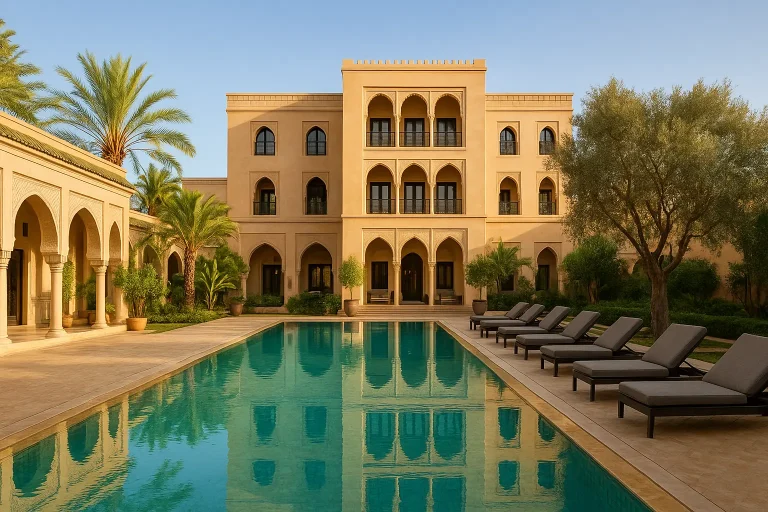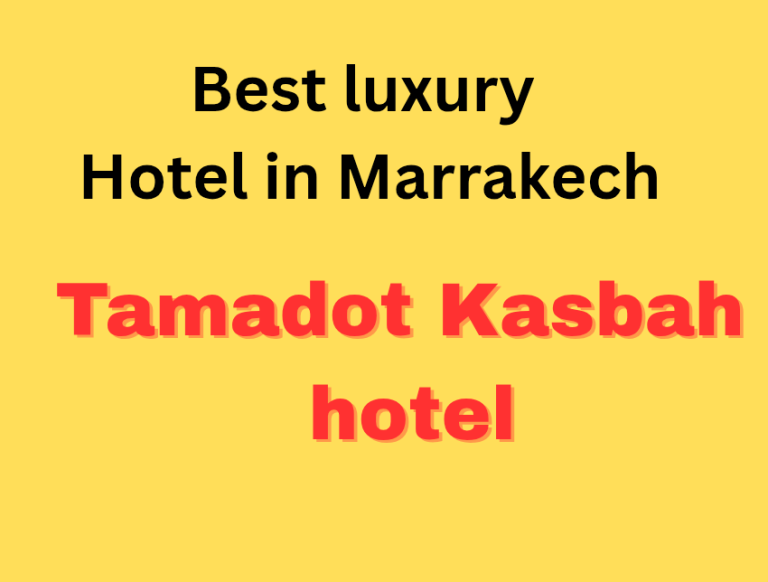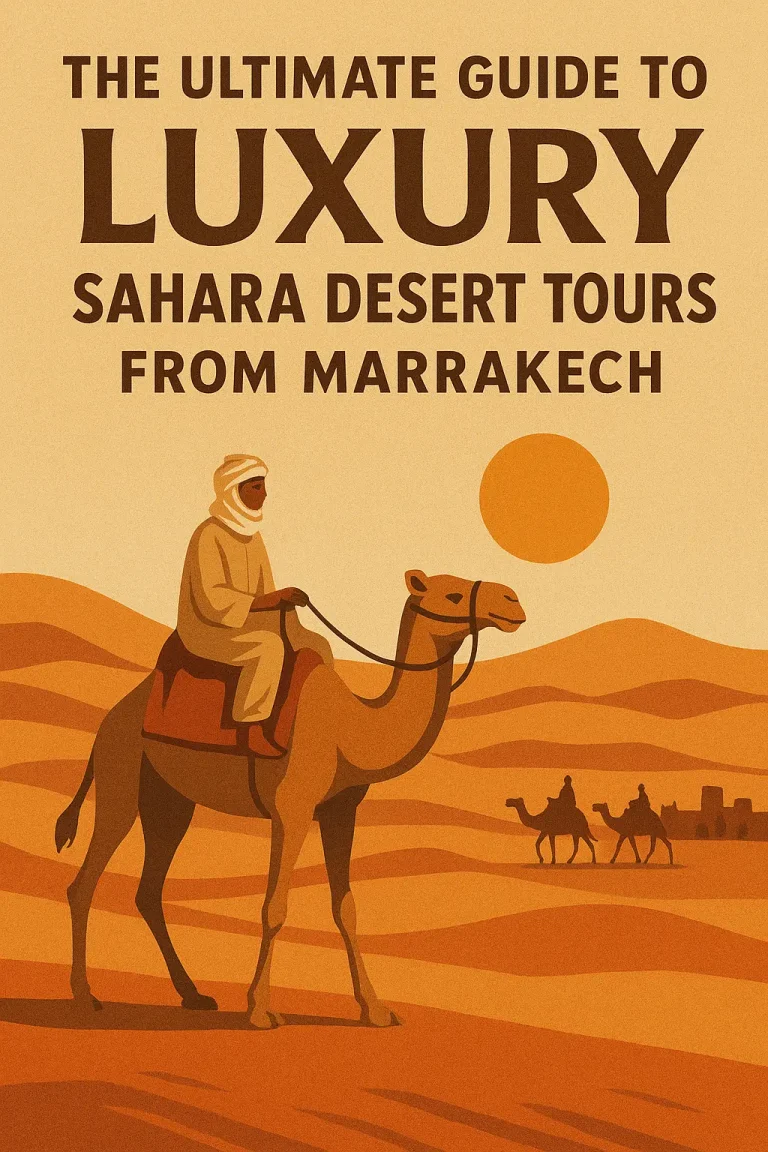Why Rabat? A Best Unique Moroccan Experience
Rabat’s Distinctive Appeal: History, Culture, and Coastal Serenity
Rabat stands as Morocco’s “Modern Capital and Historic City,” a UNESCO World Heritage site that masterfully blends Islamic architecture with French colonial heritage. Unlike the bustling souks of Marrakech where luxury establishments like La Sultana Marrakech cater to international visitors, Rabat offers a calmer, more authentic Moroccan experience ideal for cultural travelers seeking depth over spectacle.
This Atlantic coastal city presents a unique proposition: you can explore ancient Roman ruins at Chellah Necropolis in the morning, admire the unfinished 12th-century Hassan Tower at midday, and watch spectacular sunsets over the Atlantic from Kasbah des Oudayas in the evening. The city’s status as Morocco’s administrative center means excellent infrastructure, safety, and a sophisticated local culture that warmly welcomes visitors without the aggressive tourism tactics found elsewhere.
Rabat’s distinctive charm lies in its authentic daily rhythms. Here, you’ll witness real Moroccan life—families gathering in Andalusian Gardens, students debating in French and Arabic at local cafes, and artists creating contemporary works inspired by centuries-old traditions.
Pre-Trip Essentials: Planning Your Rabat Adventure
Navigating Rabat: Getting There, Getting Around, and Understanding Local Nuances
Best Time to Visit Rabat (Seasonal Trends)
Rabat’s mild coastal climate makes it enjoyable year-round, but optimal seasons are spring (March to May) and fall (September to November) when temperatures hover around 20-25°C (68-77°F). These periods avoid summer’s heat and winter’s occasional rain while coinciding with cultural events like the renowned Mawazine Festival (May/June), Jazz au Chellah (September), and the Rabat International Film Festival (fall).
Summer brings warm but manageable temperatures thanks to Atlantic breezes, while winter rarely drops below 10°C (50°F). The coastal location moderates temperature extremes, making Rabat more comfortable than inland imperial cities during peak seasons.
Getting to Rabat: Flights, Trains, Buses & Taxis
By Air: Rabat-Salé International Airport (RBA) receives direct flights from major European cities including Paris, Madrid, and London. Alternatively, fly into Casablanca’s Mohammed V Airport (CMN) and take the excellent train connection—just 90 minutes through Morocco’s modern rail network.
By Train: Morocco’s ONCF railway system connects Rabat efficiently to major cities. The comfortable, punctual trains from Casablanca (1 hour), Fes (2.5 hours), and Marrakech (4 hours) offer first and second-class options with air conditioning and wifi.
By Bus: Premium bus services CTM and Supratours provide comfortable long-distance connections. CTM operates from Rabat’s main bus station, while Supratours coordinates with train schedules for seamless connections.
Getting Around Rabat: Walking, Tram, Petit Taxi, or Boat?
Rabat’s compact size makes walking ideal for the medina and kasbah areas. The modern tram system efficiently connects Rabat to neighboring Salé, while blue “petits taxis” (maximum 3 passengers) provide convenient city transport. For a unique experience, take traditional rowing boats across the Bou Regreg River to Salé—a charming throwback to pre-bridge transportation.
The city center is highly walkable, with most major attractions within 2-3 kilometers of each other. Trams run frequently and accept contactless payment, making them perfect for longer distances or hot days.
Language & Cultural Etiquette: Embracing Morocco’s Linguistic Tapestry
Morocco’s multilingual nature reflects its rich cultural heritage. While Arabic and Berber (Tamazight) are official languages, you’ll encounter Darija (Moroccan Arabic) in daily conversations and French in business settings. English is increasingly common among younger Moroccans, particularly in tourism and hospitality.
Understanding “code-switching”—the natural blending of languages in conversation—helps visitors appreciate local interactions. Don’t be surprised to hear French administrative terms mixed with Arabic expressions, or English phrases integrated into Darija conversations.
Cultural Tips: Greet people with “salaam alaikum” (peace be upon you) or “bonjour.” Dress modestly, especially when visiting religious sites. Accept hospitality graciously—refusing mint tea or conversation may seem rude. Respect prayer times and remove shoes when entering homes or certain establishments.
Where to Stay: Rabat’s Best Hotels & Riads for Every Traveler
Finding Your Perfect Stay: Luxury, Budget, and Authentic Experiences in Rabat
Rabat’s accommodation scene rivals Morocco’s tourism capitals, offering everything from traditional riads to international luxury hotels. While Marrakech boasts legendary properties like La Sultana Marrakech, Rabat’s hotels in Morocco provide equally sophisticated experiences with authentic local character and better value.
Top Luxury Hotels in Rabat
Sofitel Rabat Jardin des Roses leads Rabat’s luxury hotel scene with French elegance, beautiful gardens, a world-class spa, and exceptional dining. Located in the diplomatic quarter, it offers tranquility while remaining accessible to major attractions.
Hotel La Tour Hassan Palace combines traditional Moroccan architecture with modern luxury. This 5-star property features stunning city views, multiple restaurants, and impeccable service that reflects Morocco’s hospitality traditions.
The View Hotel Rabat offers contemporary design with panoramic city vistas. Its rooftop restaurants and modern amenities cater to discerning travelers seeking comfort and style.
Fairmont Hotel La Marina Rabat-Salé provides waterfront luxury with marina views, multiple dining options, and comprehensive spa services.
booking flights and hotels in rabat morocco from here.
Best Mid-Range & Boutique Hotels
ONOMO Hotel Rabat Terminus delivers modern comfort with African-inspired design near the train station, perfect for travelers prioritizing convenience and style.
Dar Shâan offers boutique charm in a converted traditional house, featuring personalized service and authentic Moroccan hospitality.
Majliss Hotel Downtown provides contemporary accommodation in Rabat’s business district with excellent access to restaurants, shopping, and cultural attractions.
Charming Riads for an Authentic Moroccan Experience
Traditional riads—Moroccan homes built around interior courtyards—offer the most authentic accommodation experience. These restored properties combine historical architecture with modern comfort.
Riad Kalaa stands out for both accommodation and exceptional Moroccan cuisine, particularly their signature chicken pastilla. The intimate atmosphere and personalized service create memorable stays.
Riad Meftaha provides elegant rooms surrounding a beautiful courtyard with traditional fountains, intricate tilework, and rooftop terraces offering medina views.
Riad Dar Dar combines traditional architecture with contemporary amenities, featuring spacious rooms, authentic décor, and warm hospitality from knowledgeable hosts.
Budget-Friendly Accommodation in Rabat
Rabat Medina Hotel offers excellent value near historic attractions with clean, comfortable rooms and helpful staff familiar with local recommendations.
Ibis Rabat Agdal provides reliable international hotel standards at moderate prices, ideal for travelers prioritizing consistency and location in the modern district.
Auberge De Jeunesse caters to budget travelers and backpackers with dormitory and private room options in a social atmosphere perfect for meeting fellow travelers.
Neighborhood Guide: Choosing Your Ideal Rabat Base
Medina: First-time visitors seeking authentic experiences should choose the historic medina. Stay in traditional riads, walk to souks and attractions, and immerse yourself in centuries-old Moroccan urban culture.
Hassan Quarter: This calmer district near Hassan Tower and major museums offers upscale hotels with easy access to Rabat’s most important cultural sites while maintaining peaceful atmospheres.
Agdal: Modern, lively district popular with expats and business travelers. Features contemporary hotels, shopping centers like Arribat Center, and excellent restaurants catering to international tastes.
Quartier Administratif: Embassy district offering peace, safety, and proximity to Chellah Necropolis. Ideal for travelers prioritizing security and quiet while remaining central to attractions.
Top Things to Do: Exploring Rabat’s Iconic Sights and Hidden Gems {#top-things-to-do}
Unforgettable Experiences: Your Rabat Sightseeing Itinerary
Rabat’s attractions span millennia, from Roman ruins to contemporary art, coastal activities to imperial architecture. This diverse range ensures every traveler finds compelling experiences regardless of interests.
Kasbah des Oudayas & Andalusian Gardens
The iconic Kasbah des Oudayas presents Rabat’s most photogenic neighborhood with distinctive blue-and-white painted streets cascading toward the Atlantic. This well-fortified residential area offers breathtaking ocean views through the impressive Bab el Kebir gate.
Explore narrow alleyways lined with artisan shops, photograph stunning doorways and traditional architecture, then relax in the tranquil Andalusian Gardens—a French-created oasis of green serenity. End your visit at Café des Oudayas (formerly Café Maure) with traditional mint tea and ‘ghriba’ cookies while enjoying panoramic river and ocean vistas.
Don’t miss the Musée National de la Parure, showcasing exquisite Moroccan jewelry and traditional craftsmanship within the kasbah’s walls.
Hassan Tower & Mausoleum of Mohammed V
Hassan Tower represents one of Morocco’s most significant historical monuments—an unfinished 12th-century minaret that was intended to be the world’s tallest at 86 meters but halted at 44 meters. The surrounding plaza contains over 200 stone columns marking what would have been the world’s largest mosque.
Adjacent to the tower, the stunning Mausoleum of Mohammed V houses the tombs of King Mohammed V, King Hassan II, and Prince Abdallah. This architectural masterpiece features intricate zellige mosaics, white marble, and distinctive green-tiled roofs. Admission is free, modest dress is required, and visitors can observe the ceremonial Royal Guard, some on horseback.
Discovering Rabat’s Medina & Vibrant Souks
Rabat’s medina offers a more manageable and organized souk experience compared to Marrakech or Fes. The clearly laid out perpendicular alleys make navigation easier while maintaining authentic Moroccan market atmosphere.
Explore Rue des Consuls, a lively glass-roofed street filled with traditional crafts. Visit Ensemble Artisanal for fixed-price handicrafts, browse Rue Souïka and Rue Souk Sabbate for leather goods, textiles, jewelry, and traditional ceramics. Hunt for Rabat’s famous “colored doors”—beautifully painted traditional entrances that make perfect photography subjects.
Artistic & Historical Insights: Rabat’s Museums
Mohammed VI Museum of Modern and Contemporary Art (MMVI) showcases Morocco’s vibrant contemporary art scene alongside international exhibitions in a beautifully designed modern building.
Museum of History & Civilizations (MHC) features extensive Roman artifacts connecting visitors to Morocco’s ancient past, including pieces from nearby Volubilis.
Additional cultural venues include Villa des Arts, Musée National de la Photographie, and specialized institutions like Musée Bank Al Maghrib showcasing Morocco’s economic history.
Chellah Necropolis: Roman Roots & Marinid Walls
Chellah represents Rabat’s oldest section, dating to Phoenician and Roman times as Sala Colonia. This UNESCO World Heritage site contains Marinid-era mosque ruins, mausoleums, and crumbling Roman columns within imposing walls.
Storks nest atop ancient minarets creating striking visual contrasts between wildlife and history. The site hosts cultural events including the atmospheric Jazz au Chellah festival, where contemporary music resonates among centuries-old stones.
Coastal Escapes: Beaches, River Walks & Sunsets
Stroll the Corniche Bouregreg riverside promenade watching fishermen and enjoying Atlantic breezes. The Phare de Rabat (lighthouse) provides spectacular sunset viewing opportunities with panoramic coastal vistas.
Rabat’s beach offers surfing lessons at Oudayas Surf Club, though cleaner swimming beaches exist north and south (Temara, Plage des Nations). The coastal location provides refreshing sea air and opportunities for water sports throughout the year.
The Royal Palace & Modern Architectural Wonders
While Palais Royal Dar-al-Mahkzen remains closed to visitors, its beautiful exterior and significance as the royal family’s primary residence make external viewing worthwhile.
The futuristic Grand Theatre de Rabat on the Bou Regreg river represents Morocco’s contemporary architectural ambitions—a striking modern landmark complementing the city’s historical treasures.
A Taste of Rabat: Culinary Delights & Dining Experiences {#culinary-delights}
Rabat’s Flavors: From Street Food to Fine Dining
Rabat’s culinary scene reflects its sophisticated character, offering everything from traditional Moroccan comfort foods to innovative international cuisine. The city’s coastal location ensures exceptional seafood while its status as Morocco’s capital attracts top chefs creating memorable dining experiences.
Start with traditional harira soup—a hearty tomato-based broth with lentils, chickpeas, and aromatic spices. Street food highlights include fried fish sandwiches from coastal vendors, fresh-squeezed fruit juices, and rich milkshakes. Adventurous eaters should try escargots (snails) prepared Moroccan-style with aromatic broths.
Recommended Restaurants for Every Palate
Le Grill Robuchon brings Joël Robuchon group’s French culinary excellence to Rabat with sophisticated dishes like green bean salad with wasabi vinaigrette and barbecued banana desserts. The elegant atmosphere and impeccable service justify the premium pricing.
Uni Sushibar surprises visitors with expertly prepared sushi and sashimi in Rabat’s heart. Beautiful presentation, excellent service, and outdoor seating options create memorable dining experiences combining Japanese precision with Moroccan hospitality.
Riad Kalaa serves authentic Moroccan cuisine including exceptional chicken pastilla—layers of phyllo pastry filled with spiced chicken, almonds, and aromatic herbs. The traditional setting enhances the authentic flavors.
Additional notable restaurants include Al Marsa for high-end Spanish-inspired cuisine, Borj Eddar for fresh seafood with harbor views, La Brasserie for French classics, and Dinarjat offering traditional Moroccan dishes with contemporary presentation.
Beyond Rabat: Recommended Day Trips {#day-trips}
Expanding Your Moroccan Journey: Day Trips from Rabat
Rabat’s central location provides excellent access to Morocco’s diverse attractions, from ancient Roman ruins to imperial cities, making it an ideal base for exploring the region’s highlights.
Salé: Rabat’s Sister City Across the River
Cross the Bou Regreg River by traditional rowing boat or modern tram to explore Salé, Rabat’s less touristy twin city. The chaotic but charming medina offers authentic handicraft shopping, while the Medersa des Mérinides showcases exquisite Islamic architecture. The Salé Mosque, Morocco’s third largest, provides impressive external viewing opportunities.
Casablanca: Hassan II Mosque & Urban Hub
Morocco’s largest city lies just one hour south, home to the magnificent Hassan II Mosque—one of the few mosques open to non-Muslim visitors. This architectural marvel extends partially over the Atlantic Ocean, featuring the world’s tallest minaret at 210 meters.
Meknès & Volubilis: Imperial City & Roman Ruins
Combine Morocco’s imperial history with Roman heritage on this fascinating day trip. Volubilis, a UNESCO World Heritage site, preserves Morocco’s most important Roman ruins with stunning mosaics and ancient columns. Nearby Meknès offers imperial architecture, vibrant souks, and the famous Bab Mansour gate.
Kenitra: Off-the-Beaten-Path Escape
Explore local favorites including the Kasbah of Mehdia, Sidi Boughaba Nature Reserve, and Mehdia Beach—popular weekend destinations for Rabat residents seeking coastal relaxation away from tourist crowds.
Mastering Your Rabat Trip: Practical Tips & Cultural Insights {#practical-tips}
Essential Advice for a Seamless Rabat Experience
Safety and Respecting Local Customs
Rabat ranks among Morocco’s safest cities for tourists, but standard precautions apply. Mind belongings in crowded medina areas, dress modestly especially when visiting religious sites, and stick to well-lit streets after dark. Avoid specific areas like Takkadoum and Douar El Hajja after dark, though these rarely affect typical tourist routes.
Be confident but polite when dealing with vendors. A firm “la shukran” (no thank you) usually suffices. Most interactions with locals are genuine and helpful rather than sales-oriented.
Money Matters & Haggling
The Moroccan Dirham (MAD) is the local currency. Exchange money at banks or official exchange offices for better rates than hotels. Be aware of “tourist pricing”—some vendors quote higher initial prices to visitors, so gentle negotiation is expected and culturally appropriate.
Haggling represents relationship-building rather than mere price reduction. Start conversations, show interest in craftsmanship, and negotiate respectfully. Fair prices benefit both parties while supporting local artisans.
The Power of User Reviews & Building Trust
When booking accommodations or tours, prioritize providers with genuine, detailed reviews on Google Business Profile, TripAdvisor, and official websites. These reviews provide valuable insights into service quality, authenticity, and value while supporting businesses that prioritize customer satisfaction.

